Google's Snapseed app has a plethora of editing tools to help make your photos even better. But did you know it has specific tools designed to edit your face? Not that it needs any help, of course!
While there are many Snapseed tools that help improve your selfie game, only two are specifically designed to focus on the most important part of your selfie. Those tools, Portrait Mode and Head Pose, can be used to improve your selfie game in ways your automatic iPhone or Android camera just can't do. If you've ever wanted to take your self portraits from amateur to professional, check out the guide below.
Taking Your Selfie
Selfies are now a kind of art form, and, like any art form, practice makes perfect. You might want to practice for yourself first before applying some edits in an app like Snapseed.
If you've never taken a selfie before, or would just like some advice to improve, check out our list of tips and tricks below:
Portrait
The portrait tool gives you the ability to enhance your selfies with smart, automatic filters and effects.
To begin, tap "Open" in the top right corner of the display. Select your selfie, or take one of your own by tapping "Camera." (Refer to the above instructions for how to take your selfie).
Once your selfie is loaded into the viewer, tap "Tools" at the bottom of the display. Don't be overwhelmed by the, um, overwhelming number of items here. Just tap "Portrait" in the last row.

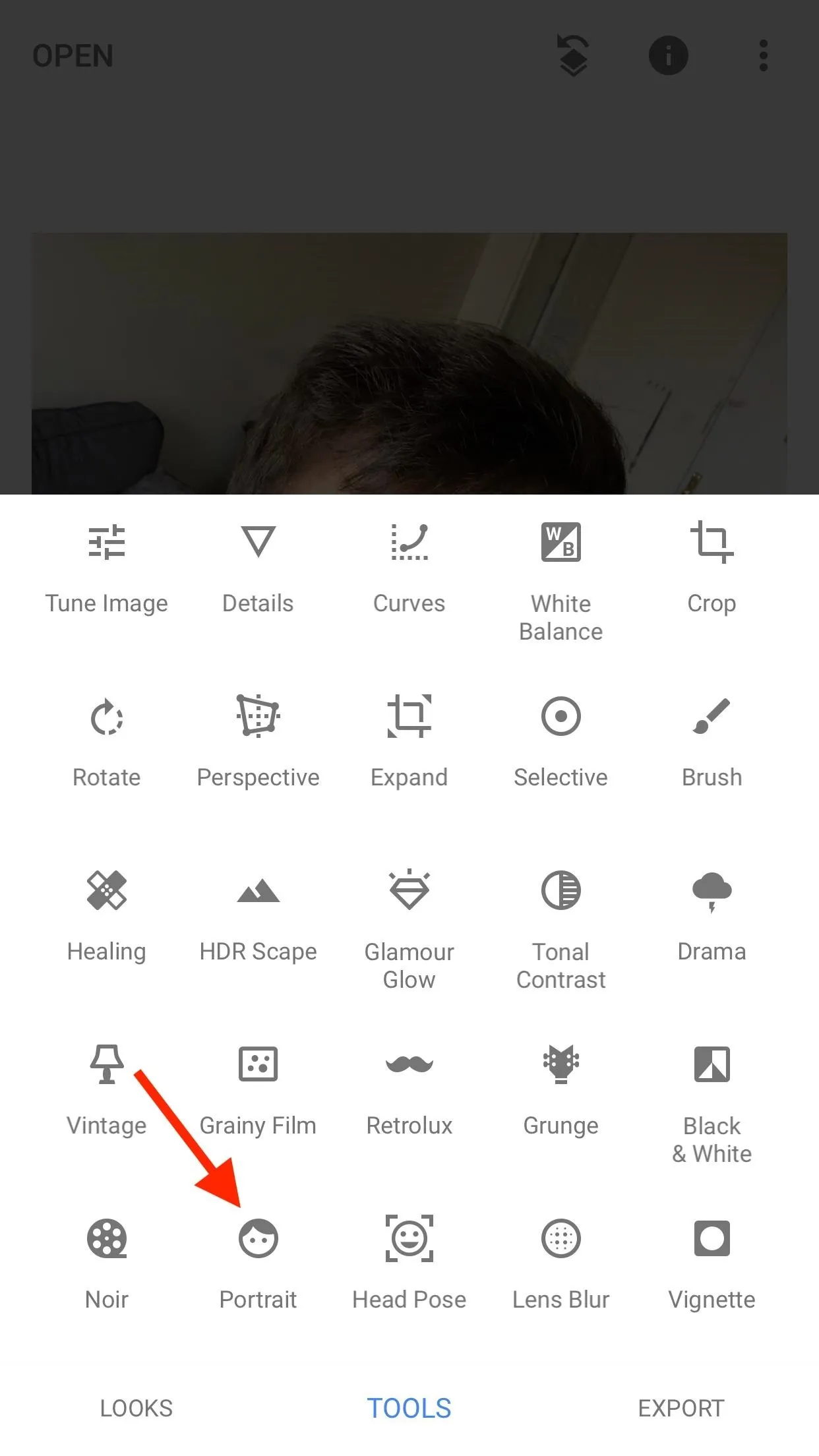


After your iPhone or Android scans the photo, you'll be ready to go.
Filters
Snapseed, by default, starts you off with filters. These are fully automatic settings, similar to what you might find in Instagram or even in iOS 11, that change the look of your face. Some filters target your eyes, while others tackle your entire selfie. Some brighten your look, while others darken. You'll have to play around with each in order to see which matches your style best.
While these settings are automatic, Snapseed gives you the option to apply additional edits to the photo from here. But more on that later ...
To see how any filter compares to your original selfie, tap the button in the top right corner of the display.
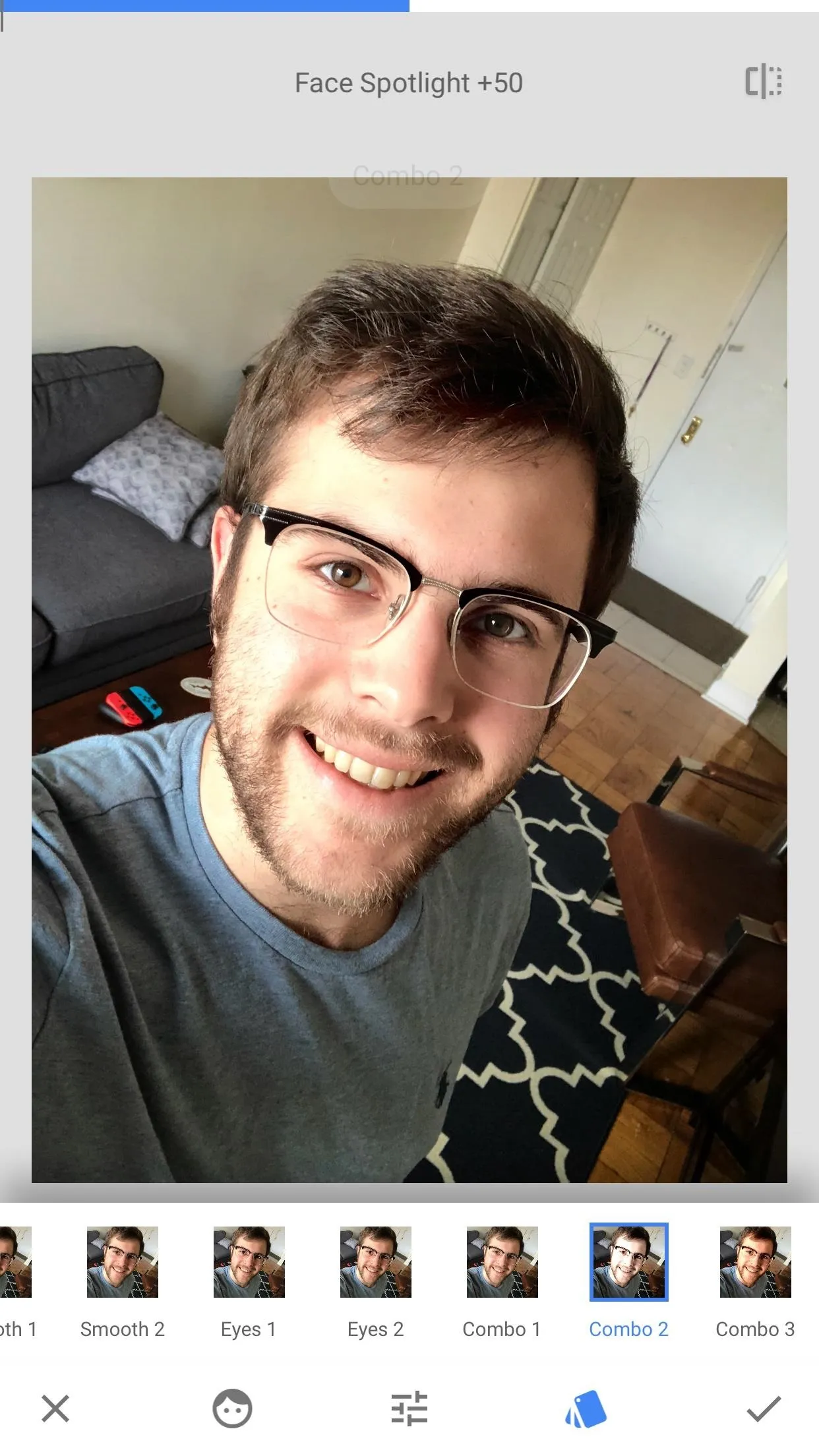
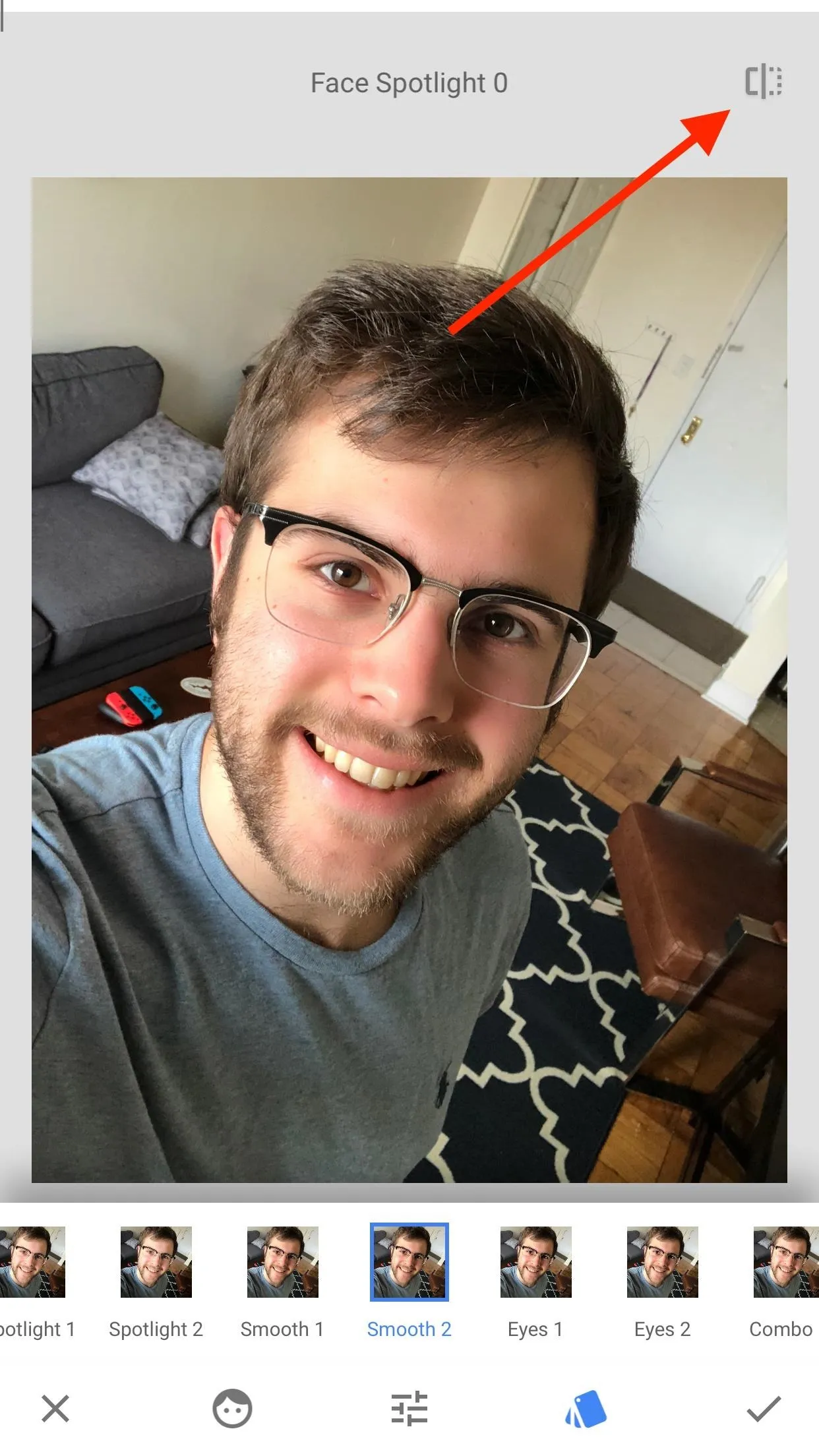


Now, the next two settings to play with are much more flexible. In fact, they allow you to mess with each filter's unique makeup.
Additional Adjustments
This section is to the left of the filters tab. It allows you to adjust three settings that dictate the look of each filter — "Face Spotlight," "Skin Smoothing," and "Eye Clarity."
Face Spotlight controls the amount of light added to your face. You may notice the background brightness of the image change with your edits, however, the most dramatic effects take place on your face.
Skin Smoothing brushes over the minute details of your face, giving you a more consistent, "smooth" look. Apply this one carefully — too much Skin Smoothing, and you start to look a bit "smoothed-over."
Eye Clarity brightens up the eyes in your selfie, which can be helpful for accentuation. However, like with Skin Smoothing, too much Eye Clarity may make your selfie look a bit ... odd. You probably want to look more enhanced, rather than abnormal.
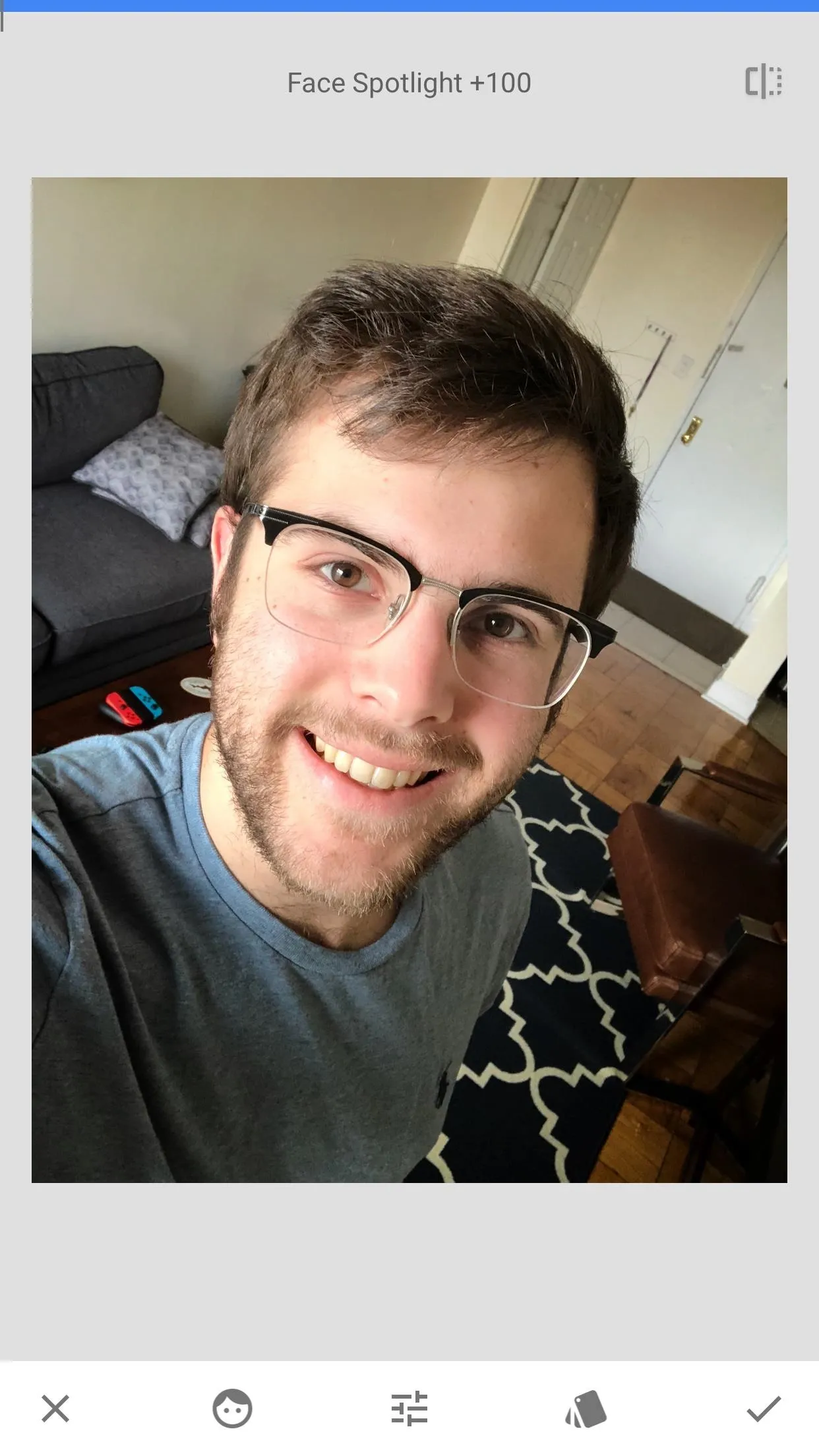

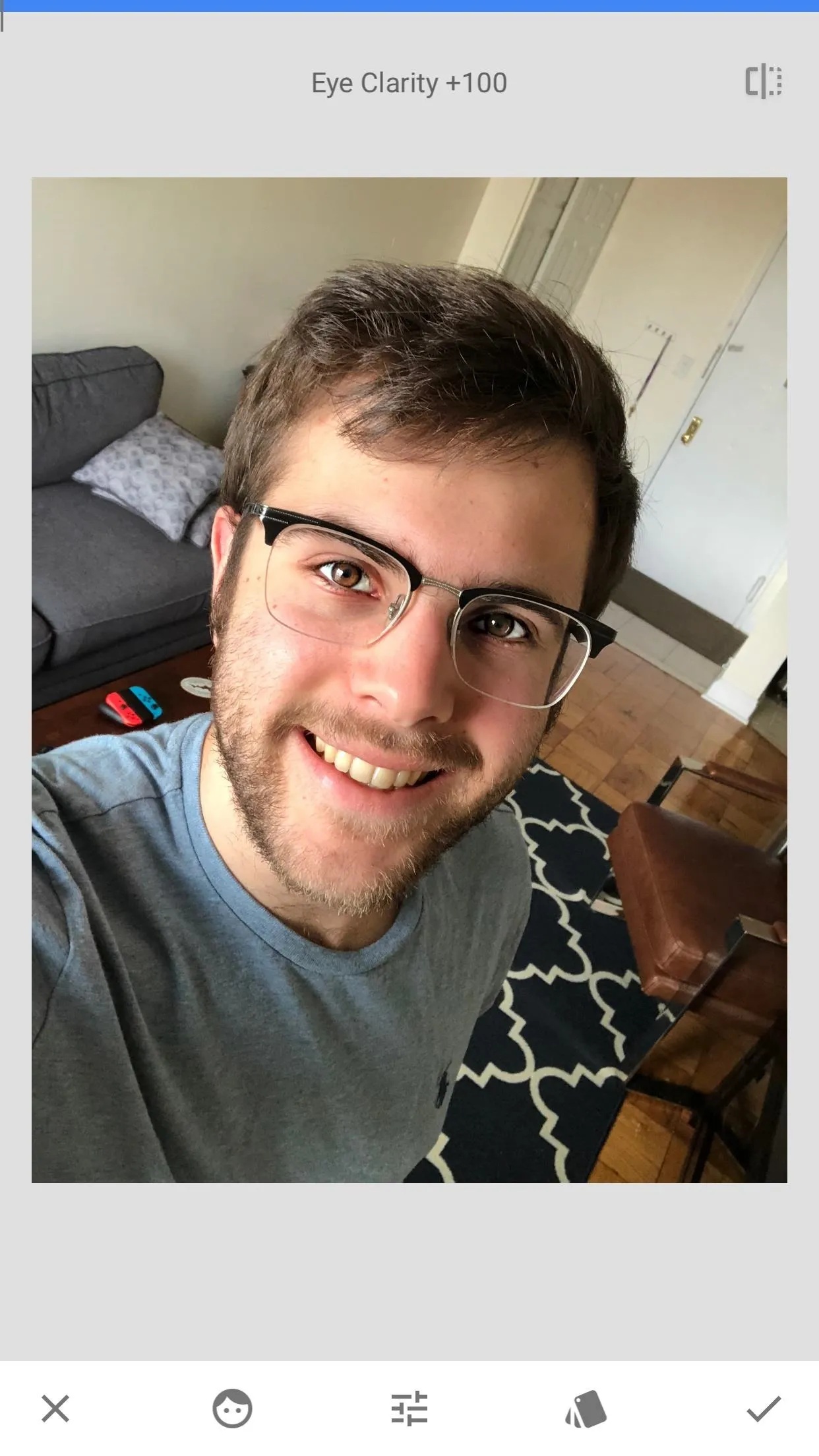



Editing with these tools is simple — just slide your finger horizontally across your selfie. You can see how much you have applied the edit on a scale of 0–100 at the top of the display. You can also pinch to zoom into your picture to really see how your edits are affecting the look of your portrait.
However, what's really cool about this feature is you don't need to be in this tab to make these adjustments. If you're back in the filters tab, simply swipe up or down to choose from any of the three options, then, swipe left and right to apply that edit.




Skin Brightness
This section allows you to choose how bright your skin appears in your selfie. You can choose from five options, ranging from none, pale, fair, medium, or dark.




If you've chosen a filter already, one of these options may have already been chosen as part of that filter. Tap on any other to see how it affects your filter.
Head Pose
First, a disclaimer — this tool can easily do nothing but make your selfie look anyway from ridiculous to downright creepy. It should be used mildly for best results, especially since the technology, while impressive, still needs some work.
The idea behind this interesting effect is to adjust physical features of your face — specifically, your head position — in order to craft the look you have in your mind.
When first launched, Head Pose is activated by default. Simply drag your finger around the display, and your face will move with you, although probably not as far.

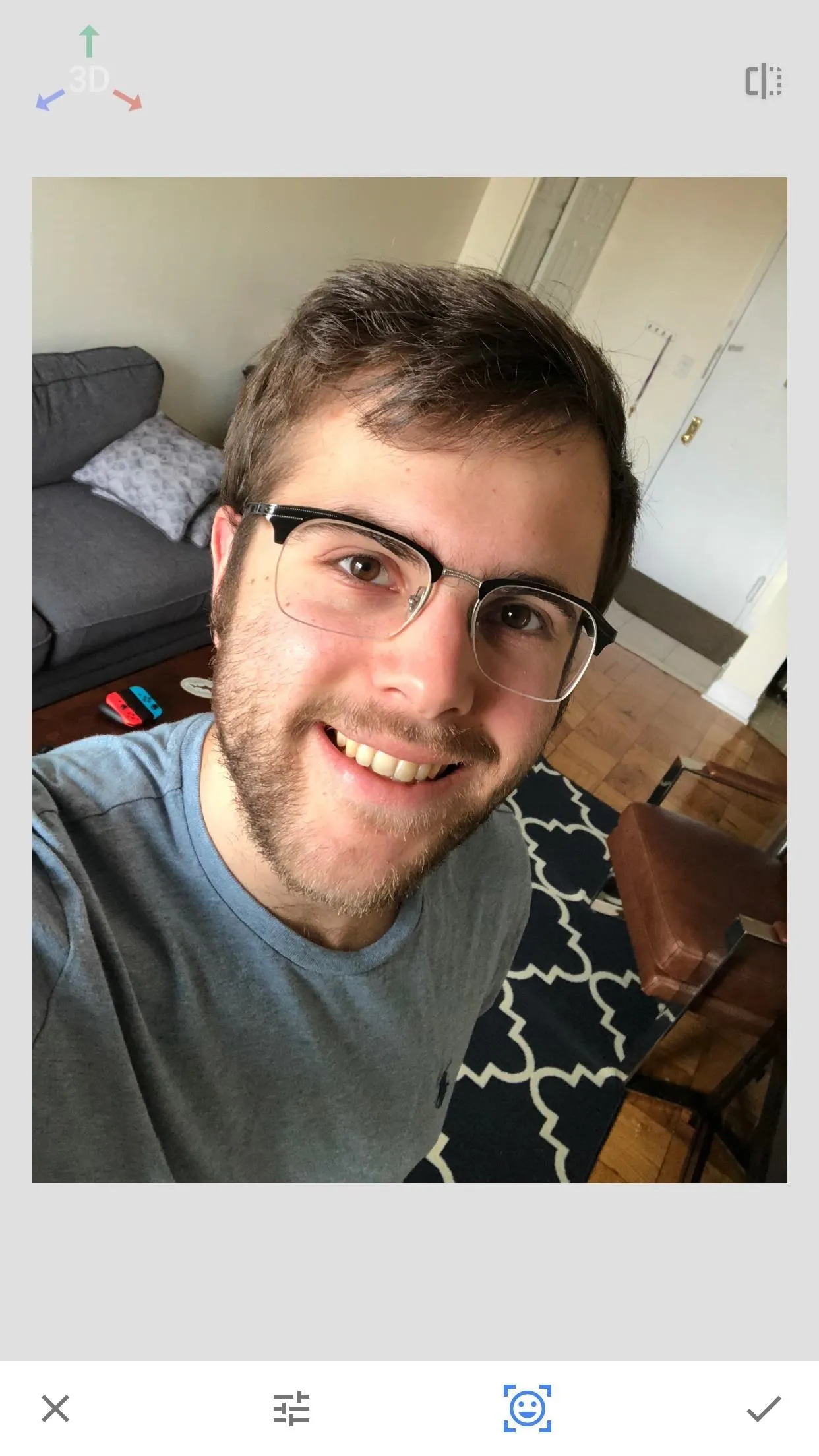


Again, you can zoom in to make fine adjustments, although I found it really wasn't useful for this setting. You don't quite get the full effect unless you can see the entire picture.
Additional Adjustments
Just as with Portrait, Head Pose has additional adjustments for you to make. You can either tap the tab next to the Head Pose tab at the bottom of the display to reach these adjustments, or, like in Portrait, you can swipe up and down to activate them. Keep in mind you need to deactivate Head Pose first by tapping on its tab. Just make sure its grey, and you'll be all set.
Your options here are different from Portrait, however. You can adjust Pupil Size, Smile, and Focal Length.
Pupil Size does indeed increase your pupil size, however, it also increases the size of the rest of your eye. Better use the zoom feature on this one, though.
Smile allows you to turn that frown upside-down, or turn your smile into a frown, if you'd like. It's ... interesting, to say the least.
Finaly, Focal Length adjusts your face's "distance" to the camera, by either inverting your face to appear further away, or bulging it out to appear closer. It sounds a bit odd, but, in moderation, might aid some people's selfies.
So, what does that all add up to? I think my results speak for themselves:

Before.

After.

Before.

After.
So, how did your selfies turn out? Did Portrait Mode and Head Pose help you? Let us know in the comments below!
- Follow Gadget Hacks on Facebook, Twitter, Google+, YouTube, and Instagram
- Follow WonderHowTo on Facebook, Twitter, Pinterest, and Google+
Cover image and screenshots by Jake Peterson/Gadget Hacks


























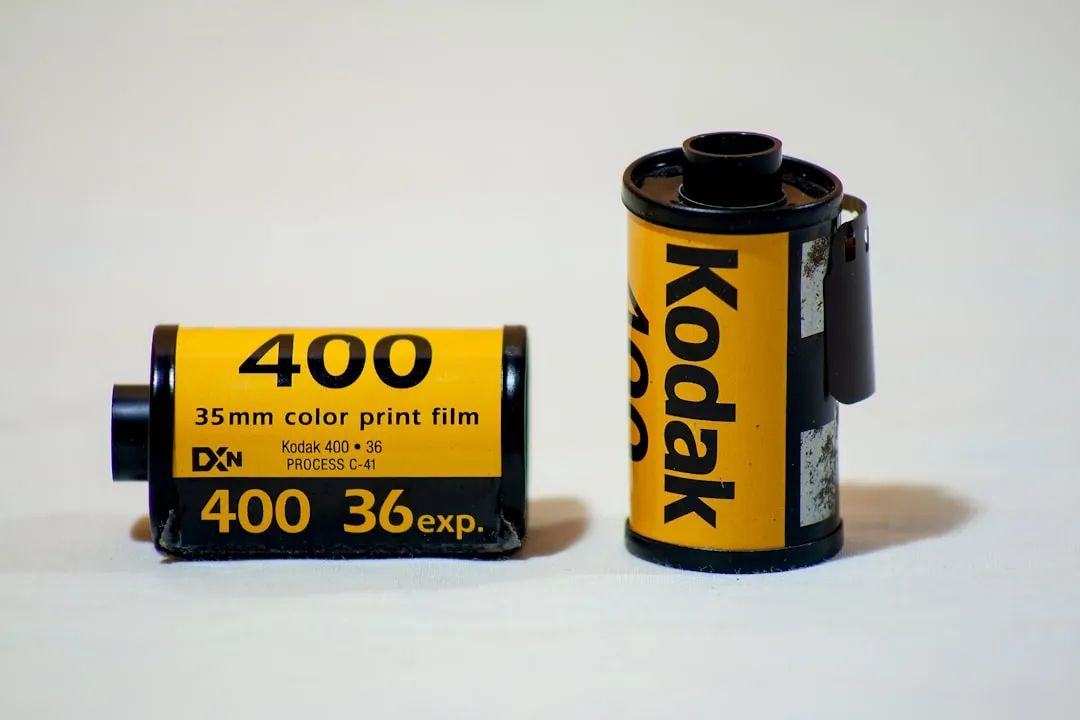
Comments
Be the first, drop a comment!